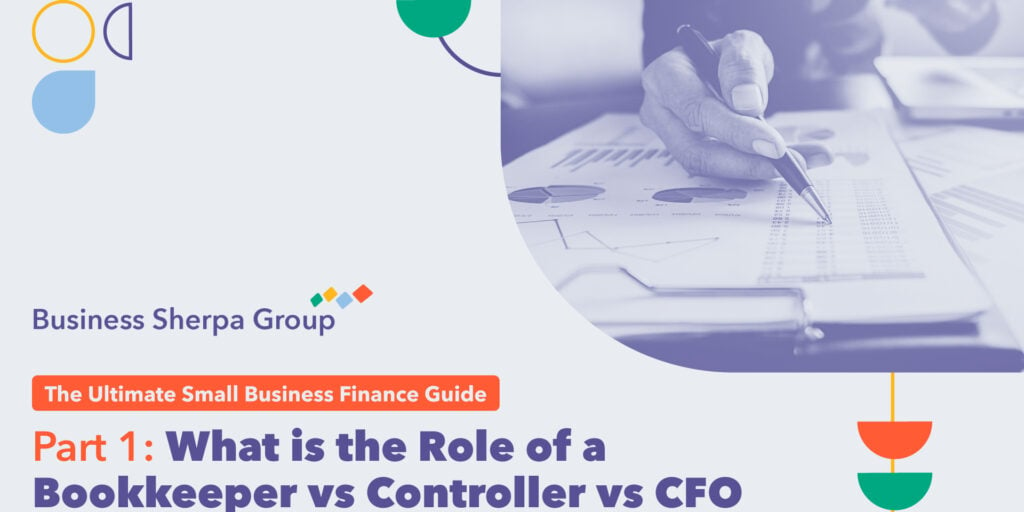For many small and medium-sized enterprises (SMEs), choosing a digital accounting tool is a big step toward modernization. The promise of efficiency, accuracy, and financial clarity can be enticing—but what happens after the decision is made? Transitioning to a new system involves more than plugging in the software and letting it run. It requires strategic planning, thoughtful change management, and a clear vision of the impact on your business.
This article delves into the often-overlooked steps that follow the selection of a digital accounting tool. From understanding its potential impacts to managing the change effectively, we’ll explore how to make the most of this pivotal decision. We’ll also highlight the critical role a CFO plays in implementing the tool and aligning it with your business strategy to ensure lasting success.
Understanding the Impact of Digital Accounting
Selecting a digital accounting tool is just the first step in transforming how your SME manages its finances. The real change—and potential for improvement—comes after implementation. To fully realize the benefits of your chosen tool, it’s essential to understand its impacts on your business and prepare for the adjustments it requires.
Here’s what you can expect once the tool is in place:
1. Improved Financial Visibility
Once your tool is up and running, you’ll gain real-time access to some or all of your financial data (depending on the tool(s)). Dynamic dashboards and instant reporting provide up-to-the-minute insights into your financial health, enabling faster, more informed decision-making. These features can transform how leadership monitors and responds to financial trends. But this benefit is best realized if someone is available to consistently monitor and maintain the administration of the tool.
2. Streamlined Processes
After implementation, automation will begin to take over time-consuming tasks like data entry, invoice processing, and reconciliations. This shift reduces errors and frees your team to focus on higher-value activities, such as analyzing financial data and strategic planning. However, it may also require revisiting existing workflows to ensure they align with the capabilities of the new tool, and some changes may be required.
3. Enhanced Compliance
Digital tools often come with built-in compliance features, which can simplify tax preparation, ensure regulatory deadlines are met, and standardize reporting practices. After setup, you’ll need to familiarize yourself with these features and adapt your compliance processes to leverage them fully. This may also involve training your team on how to use these tools effectively.
4. Cultural Shift
Adopting a digital accounting tool often requires a shift in how your team approaches financial processes. Once the tool is selected, it’s essential to prepare for changes in workflows and data interactions. Some employees may need additional support to adapt to these changes, making communication and training key to overcoming resistance and fostering a smooth transition. A finance leader like a CFO can play an important role in leading the culture shift.
There are always more impacts, but the key is that by focusing on the impacts your tools will have on your organization, you can ensure that your team is well-prepared to integrate and use the tool. Thoughtful planning and proactive management will help you turn a well-chosen tool into a long-term asset that drives efficiency, compliance, and growth.
How a CFO Can Drive Success After Selecting a Tool
Selecting a digital accounting tool is a strategic move that demands careful planning, alignment with business goals, and ongoing optimization. This is where the expertise of a CFO becomes invaluable. Once a tool is chosen, a CFO can guide your business through the next steps to ensure that the investment delivers maximum value. Here’s how a CFO can support the process:
1. Evaluating ROI and Fit
After the tool is selected, the CFO’s first priority is confirming its alignment with your business objectives and assessing its return on investment. By analyzing key financial metrics and projected benefits, the CFO ensures that the tool meets immediate needs and supports long-term growth. Their expertise can also help identify additional opportunities the tool might unlock.
2. Building the Transition Plan
A CFO is critical in designing a detailed roadmap for implementing the tool. This plan includes timelines, milestones, resource allocation, and risk mitigation strategies. The CFO’s strategic oversight minimizes potential disruptions, making the transition process smoother and more efficient.
3. Optimizing Workflows
Once the tool is in place, the CFO assesses how it integrates into existing processes and identifies ways to optimize workflows. This may involve redesigning processes to take full advantage of the tool’s features, such as automation and advanced reporting capabilities. The CFO ensures that the tool is not just functional but transformative in supporting the broader financial strategy.
4. Communicating the Vision
Transitioning to a new system often involves change, which can lead to resistance within the organization. A CFO bridges the gap between technical and operational teams, clearly communicating the value and purpose of the tool to both leadership and staff. By championing the vision and addressing concerns, the CFO fosters alignment and drives team buy-in.
5. Ongoing Monitoring and Adjustment
A CFO’s role doesn’t end once the tool is implemented. They continuously monitor its performance against predefined success metrics, ensuring the tool remains effective as the business evolves. If adjustments or upgrades are needed, the CFO can identify these opportunities early, keeping the tool aligned with the company’s changing needs.
The Role of Change Management in Adopting a Digital Accounting Tool
As briefly mentioned earlier, thoughtful change management helps ensure that your team embraces new tools rather than resisting them. By focusing on preparation and engagement, you can streamline the implementation process.
One of the first steps in change management is engaging stakeholders early. Involve your team from the outset, giving them a voice in discussions about the new tool and its potential impact. This addresses initial concerns and fosters a sense of ownership and buy-in. Employees who feel heard are more likely to support the transition and contribute positively to its success.
Before implementing the tool, it’s crucial to assess your current accounting processes. The CFO can help take the lead here, but no matter who is managing the project, it’s worth taking the time to map out existing workflows, identify inefficiencies, and pinpoint gaps that the new system can address. This assessment provides a clear baseline and helps ensure the tool is customized to meet your specific needs, maximizing its value.
Comprehensive training and support are also key components of successful change management. Tailor training sessions to the unique needs of your team, ensuring they understand how to use the tool effectively and confidently. Beyond initial training, provide ongoing support to troubleshoot issues and reinforce learning. When employees feel supported, they are more likely to adapt to and fully utilize the new system. The tool itself will often provide technical documentation–it’s worth augmenting this with custom documentation for how your team members should use the tool in your organization. There are lots of tools out there these days that also help make this process easy.
Finally, set clear goals and metrics to define success. Whether your objectives include faster month-end closings, improved cash flow forecasting, or enhanced reporting accuracy, measurable outcomes provide a roadmap for implementation and a benchmark to evaluate progress. These goals keep the team focused and aligned throughout the transition.
By approaching the adoption of a digital accounting tool with a strong change management strategy, you can minimize disruption, overcome resistance, and ensure that your business fully realizes the benefits of this transformative decision.
Conclusion
The journey doesn’t end with selecting a digital accounting tool—it’s only the beginning. By understanding the transformative impacts of digital accounting, SMEs can unlock benefits such as improved financial visibility, streamlined processes, and enhanced compliance. However, these gains require careful change management to address resistance and integrate the new system seamlessly.
A CFO’s strategic guidance is invaluable throughout this process. From evaluating the tool’s fit and return on investment to building a comprehensive implementation plan, optimizing workflows, and ensuring ongoing monitoring, a CFO ensures that the transition is not just successful but transformative.
With the right approach, adopting a digital accounting tool becomes more than a technology upgrade—it becomes a strategic shift that positions your business for growth, resilience, and better decision-making.
If you have questions about digitizing, our Cloud-Based Accounting team has years of experience supporting organizations through accounting transitions and is always happy to discuss your unique situation.










